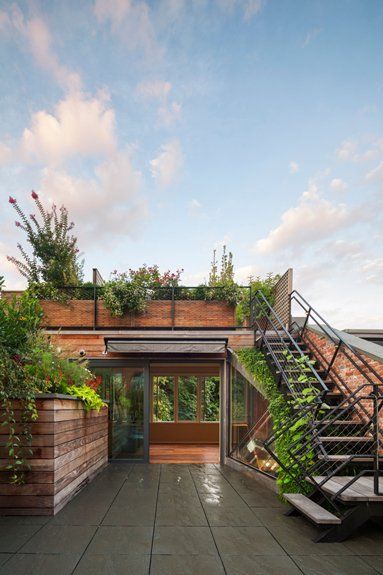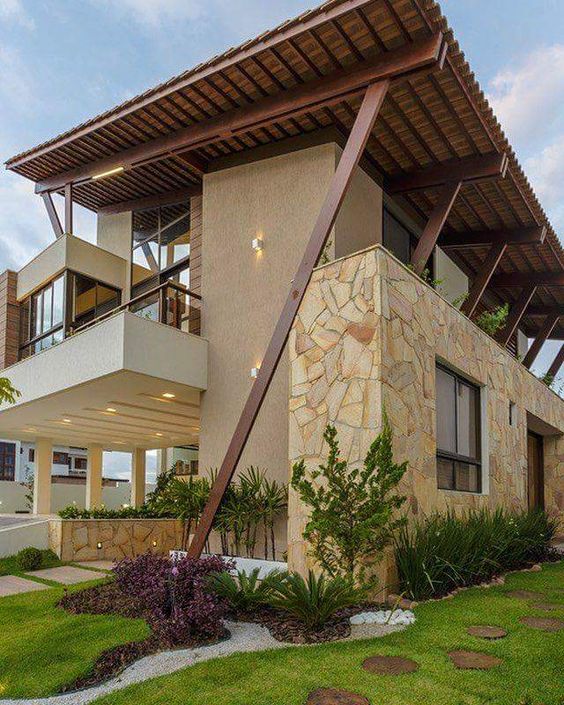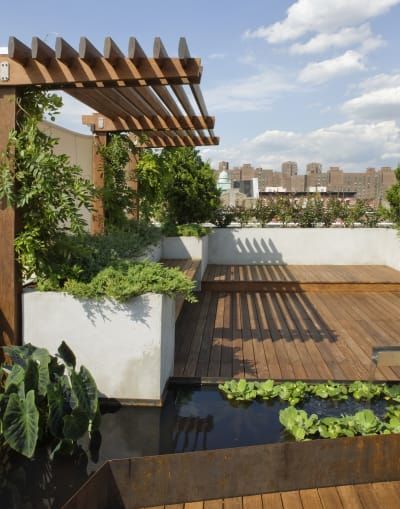Peyrevent.com – A village house roof design is an important aspect of the structure. It makes the house look taller and gives the house a comfortable impression. This design uses a variety of levels and looks divided from the outside. The curved profile makes the roof a reliable protection against precipitation. A village house roof can be simple or complex, but the most common is a one-story version. The other design is the same as the one-story version.
Give Your Home a Modern and Unique Look
A three-sided design gives a house a modern and unique look. The long lines in the middle give the appearance of a split house. The color of the house can also be changed to suit your taste. For an attractive effect, use a color that is unique and fits your taste. This design is suitable for people who own multiple vehicles. They can use the space for sports, car washing, or other purposes. And while it looks weird from the outside, it is perfect for any landscape.
For those who live near rice fields, a two-roofed village house is the perfect choice. The long windows and large roof of the main house let in ample natural light. The terrace has a small roof, which adds an extra flair to the design. In the villages, you’ll find similar houses, but none have the uniqueness of a two-roof village house. In the countryside, a village house roof design can fit perfectly with your lifestyle.

For those who don’t want their house to look like an old village house, a simple design can be a great option. The design is easy to maintain and makes the house look spacious. A small roof over the door creates a simple letter “L.” This will give the impression of a small front door. Large glass windows add a modern touch and make it look more elegant. With the right color scheme, a simple village house design can be elegant.
Features of the Village House Roof
The roof of a village house is often in the shape of a kite, which provides its owners with nostalgia for the simpler days. The kite roof will break the monotony of the traditional houses in the area. This house has a mezzanine floor and a ground floor. The ground floor contains a family room, a dining area, and a kitchen. The mezzanine floor is used as a loft or an extra living space.
Another option is a Dutch-gable building. This is larger than the typical NPC village buildings. The gable portion is often flat and paved for outdoor living. The flat roof may have a parapet or be covered for a safe rooftop area. A Dutch-gable roof design may also be curved. This type of roof is difficult to create in normal Minecraft scale, as the shape of the building makes the roof more complicated to construct.

A village house roof design should be practical for the local climate and should be large enough to hold large parties. If possible, you should build a village house with a shady backyard. Using decent materials will be important, so you might want to add a pool or stairs for extra space. The roof design will depend on the materials you choose. It is important to have a solid foundation and stairs if you want to build a village house.
Making a Village House Roof Design
The roof design of a typical village house in Kerala is based on the Shastra principles. Thachu Shastra, a traditional Indian art, is an excellent reference for a village house roof design. The main building materials are wood and stone. In addition, typical Kerala villages are constructed using local resources and building techniques. It is important to note that the average village house roof design is only one story. If you want to have more rooms, you should build several stories.

A typical Shirakawa-go house has a triangular roof design that makes it instantly identifiable. The word “gassho” means “constructed like hands” and is a reference to how the building has been constructed for generations. This design was developed for its resilience to heavy snowfall. This region has regularly seen two to three meters of snowfall. The triangular shape of the roof helps the snow slide off its top. The design evolved over many generations, and some of the villages have been designated UNESCO World Heritage sites.


